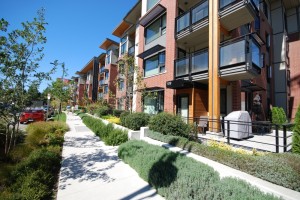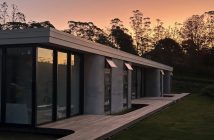A property that gets more exposure to sunlight is more attractive, especially in ‘temperate’ climates like New Zealand’s, but until now the value of that sunshine has not been calculated.
A study by Motu Economic and Public Policy Research Trust is the first research anywhere in the world to specifically evaluate the value buyers place on the sunshine hours received by different property.
“We found that each additional hour of direct sunlight exposure for a house per day, on average across the year, adds 2.4 per cent to a dwelling’s market value,” says Arthur Grimes, senior fellow at Motu and co-author of the study.
“We know that sun is important when choosing a house.
“At present the impact of a building that is designed in a way that will shade its neighbour is controlled by often inflexible regulations that specify building parameters,” Grimes notes.
“This research is designed to put a value on sunlight, so that the change can be priced, potentially enabling compensation for affected owners and better valuation of development sites.”
The research looked at houses sold in in Wellington between 2008 and 2014.
Wellington was chosen as the city is small and its local economy and housing market were stable over the study period.
“Perhaps the most important attribute of Wellington for our analysis, however, is its geographical topography and how it has intensified.
“It is not difficult to find houses that, while located in the same neighbourhood, have very different exposure to direct sunlight due to the effects of hills, valleys and nearby buildings,” Grimes explains.
The research used REINZ data and allowed for number of bedrooms, total floor area, the decade when the house was built, access to off-street parking and the date of sale.
The researchers then used fine-resolution topographical models from Wellington City Council to determine how much sun a given property received throughout each day of the year, assuming a clear sky.
“For places other than Wellington, the value of sunshine hours may be higher or lower depending on factors such as climate, topography, city size and incomes.
“Nevertheless, our approach can be replicated in studies for other cities to help price the value of sunlight in those settings,” Grimes believes.
Example: Developers are considering building a new multi-storey development that will block three hours of direct sunlight exposure per day (on average across the year) to two houses, each valued at $1 million.
The resulting loss in value to the house owners is in the order of $144,000 ($1,000,000 x 2.4% x 3 x 2). Instead of regulating building heights or the site envelope for the new development, the developer could be required to reimburse each house owner $72,000.
In return, the developer would be otherwise unrestricted (for sunlight purposes) in the nature of development.
If the development cannot bear the $144,000 then the efficient outcome is that the development does not proceed.
Conversely, if the development can bear that sum, then the socially optimal outcome is for the development to occur and, from an equity perspective, the neighbours are compensated for their loss of sunlight exposure.
The Valuing Sunshine study by David Fleming, Arthur Grimes, Laurent LeBreton, David C. Maré, and Peter Nunns received funding from funding from New Zealand’s Ministry of Business, Innovation and Employment through the Building Better Homes Towns and Cities National Science Challenge.



